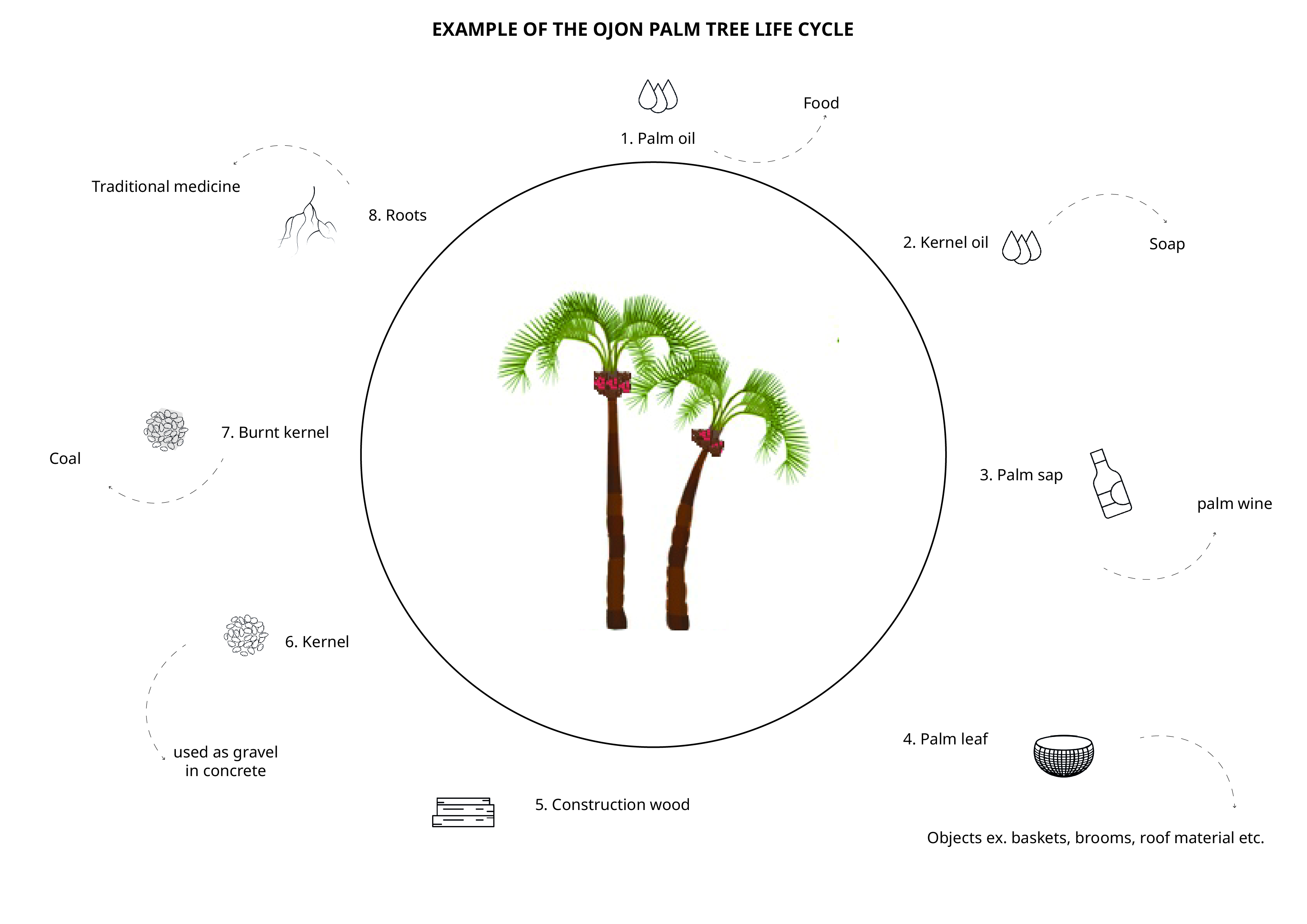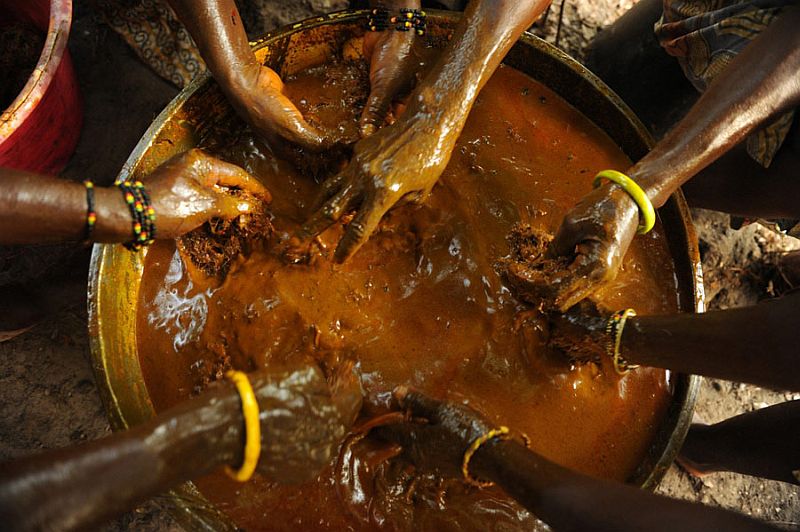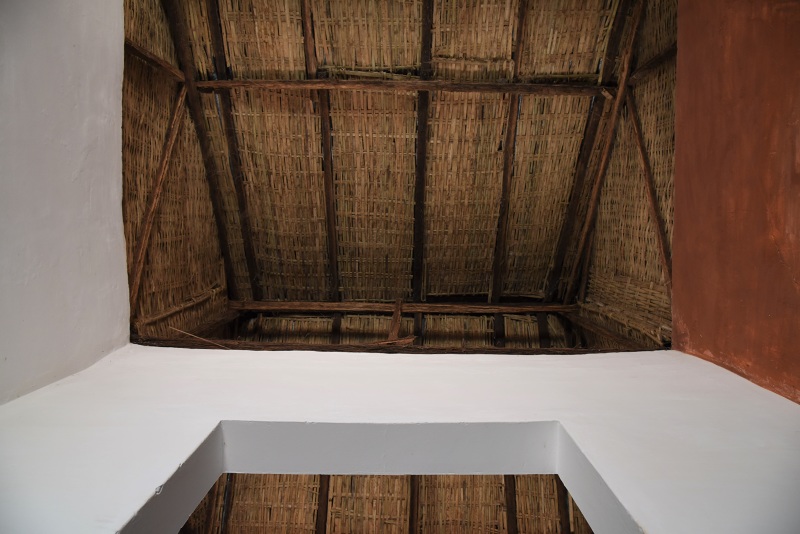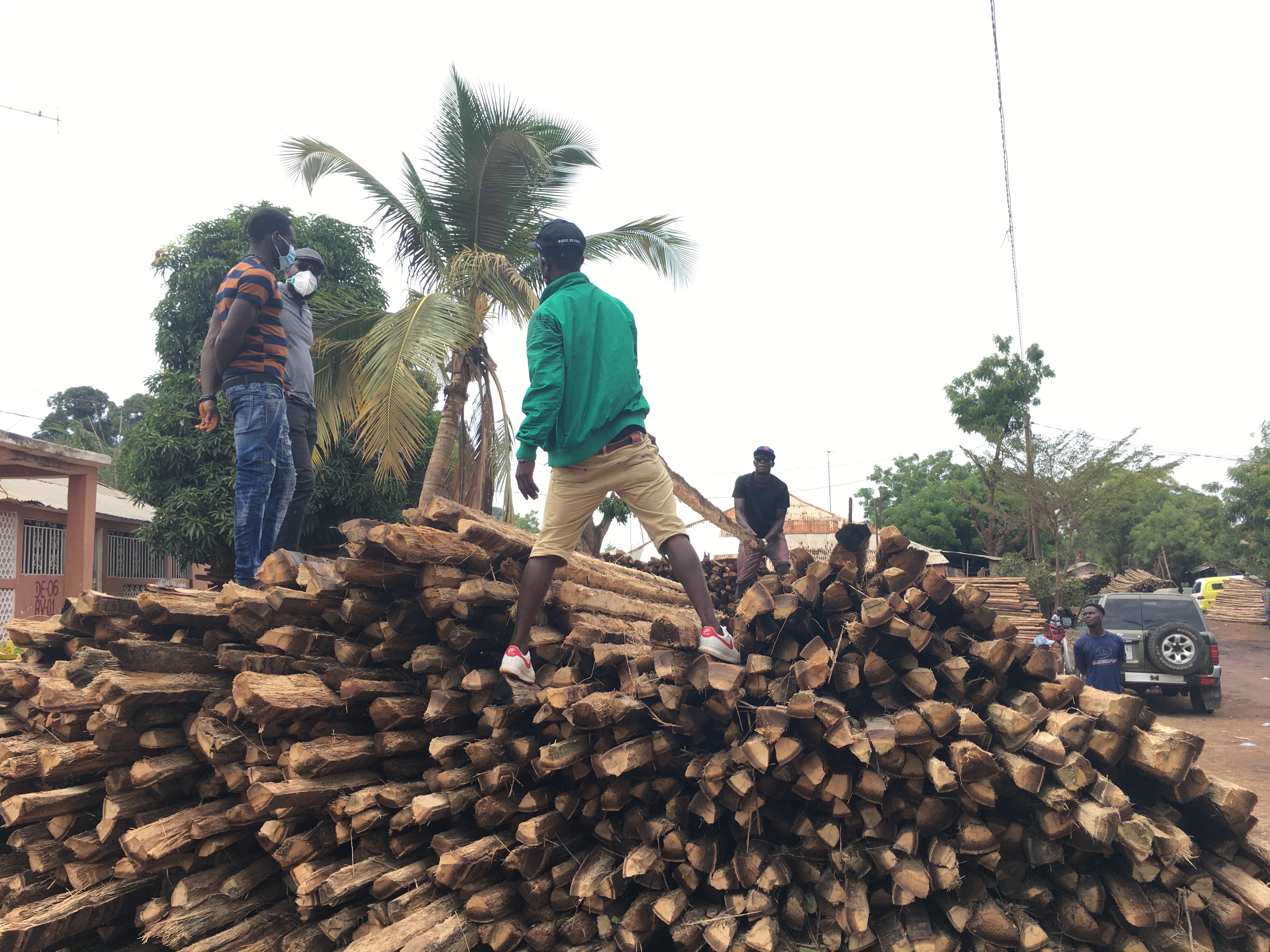Ojon palm tree fruit, sold in a local market in the region of Gabu, Guinea-Bissau. Photo: Accelerator Lab Guinea-Bissau
What is the relationship between culture and development? What is the ability of the creative economy in Guinea-Bissau to “invent the new” or “re-invent the existing”, ultimately turning into an economic catalyst?
These were some prodding questions we asked ourselves when the Accelerator Lab Guinea-Bissau embarked on a six weeklong “Bias di Soluson” (solution finding trip), as we call it in the local Creole language. The aim of the trip was to establish contact with existing innovation networks and draw inspiration on how to tackle complex sustainable development challenges by learning from the people who face those challenges every day.
During the past six weeks we toured all regions of the country, met with 45 out of 48 authorities at both regional and sectoral levels, as well as civil society and local communities. We mapped a total of 158 grassroot solutions, innovations, inventions, and positive deviances, which will soon be showcased in the Na No Mon Platform, a community platform initiated by UNDP Guinea-Bissau, with the ambitious aim of making the existing innovation networks in the country visible. Since returning to the office, let's just say there's been a lot to digest, summarize and analyze! It has become clear to us that culture is everywhere. It affects all levels of society and public services and is deeply rooted in our heritage and traditional know-how, thus crossing all artistic inclinations.
Looking back at the past six weeks of criss-crossing the regions and sectors of the country, there is one thing that really stood out in our minds, the Ojon Palm Tree life cycle, and its potential! We had the chance to experience the life cycle of the palm tree up close. Now, let us tell you the story!
Ojon Palm Trees in the island of Jeta in the western part of Guinea-Bissau. Photo: Accelerator Lab Guinea-Bissau
The Ojon Palm Tree
The scientific name of the Ojon Palm Tree is Elaeis Guineensis. The tree is native to Africa but was imported to South-East Asia around 100 years ago as a decorative tree crop. Today, Indonesia and Malaysia make up over 85% of the global supply of palm oil although there are 42 other countries that are also major exporters of the product. In Guinea-Bissau, palm oil used to be an export commodity during the 70´s and 80s. Nowadays, it is mostly produced on small scale household level. Globally, palm oil has been, and continues to be a major driver of deforestation of some of the world’s most biodiverse forests, destroying the habitat of already endangered animal species.
The palm tree is tall and narrow and can be found almost everywhere in Guinea-Bissau. The renowned West African palm oil is produced from this tree, but conversations with communities in various parts of the country made us realize that there is a deeper value chain to be found in its yields.
Diagram explaining the Ojon palm tree lifecycle as experienced in our trip.
The traditional Chabéu dish
Food is strongly connected to culture and heritage. We were invited for a traditional meal of Chabéu (dish made from Ojon palm oil), when we visited the sector of Boé, home to the city Madina de Boé, which served as the de facto capital until Guinea-Bissau's independence was finally recognized by the colonial power of Portugal in 1974. Chabéu is one of the most popular dishes of Guinea-Bissau. It is served with white rice and smoked-fish, pumpkin and cassava, a dynamic combination with a specific taste created by the palm oil base.
Women hand pressing the boiled Ojon fruit to extract the palm oil in Guinea Bissau. Photo: Alexia Foundation/ Ami Vitale
The lady who invited us for the meal walked us through how she harvests the fruits in the nearby forest. She smiled as she explained that the palm fruits are available all year round, in other words “it is always Chabéu season”. After picking the palm fruits she keeps one part for herself and sells the part she does not need, allowing her to create a small economy to sustain her household. The palm oil, or Citi oil as it is called locally, is extracted by boiling the fruit in hot water until it is soft and then squeezing by hand or machine. The knowledge of how to extract, cook and process the fruit, was passed down from her mother, and is a centuries-old tradition in Guinea-Bissau, known to almost every woman living in the rural parts of the country as a cultural relic and an economic treasure.
Ojon palm tree fruit. The fruits are removed and boiled in water until the palm oil is separated. Photo: Accelerator Lab Guinea-Bissau
Women in the sector of Boe using a hand press machine to extract the palm oil from the Ojon fruit. The machine is an invention created by Zeca da Silva, member of AGPI, the Guinean Association of Promotion of Invention and Innovation. Photo: Accelerator Lab Guinea-Bissau
Black soap made from kernel oil
In the region of Boé we also had the chance to meet with Fatumata Sedibé who lives in the village of Beli. The village named Beli is located in the hinterland of the isolated mountains in the northeast of the country. There is no phone network coverage in the area and messages are often conveyed through people that travel along the bumpy unpaved roads to neighboring tabankas (villages). Transport of goods and services is extremely limited, hence inhabitants must be creative in solving their everyday challenges. Once again, we were invited for a meal of Chabéu, this time without the fish since, it is hard to transport fresh goods due to the transport issues the villagers face. Fatumata told us the story of how after extracting the Citi oil she uses for cooking, she boils the kernel that is left one more time. This allows for the kernel oil to come out, which she uses to create her own “black soap”. The characteristic dark color of the soap comes from the kernel oil but can also issue from ashes of locally harvested plants. In the case of Fatumata, the ingredients she uses is kernel oil mixed with leftovers from corn peelings she uses for cooking, as well as a portion of caustic soda. She demonstrated to us the different steps of the soap making process. In general, when the soap is completed, she sells it to her neighbors to sustain her household or uses it for her personal hygiene as well as for washing dishes and clothes.
The process of making the black soap. Photo: Accelerator Lab Guinea-Bissau
This kind of soap is produced in a range of African countries and the “African black soap”, as it is commonly called, is gaining increased popularity in the west as it is said to have many beneficial properties such as anti-inflammatory, exfoliating, anti-acne, eczema treating, reducing dark sports and blemishes among many others.
Finished “black soap” prepared by Fatumata Sedibé, ready for sale or for personal use. Photo: Accelerator Lab Guinea-Bissau
Palm wine
In the region of Canchungo, the western part of the country, we visited the isolated island of Jeta. To get there, we travelled 10 hours from the capital, Bissau, on critical road conditions and on a canoe ride through the mangroves. There is only one canoe per day to the island thus we needed to set up good contacts for information about the timetable as takeoff depends on the tide, which changes rapidly.
When we finally reached Jeta, we got a warm welcome from the village chief also known as the Regulo, and we unexpectedly ended up having a discussion with his son regarding the widespread palm wine production on the island, extracted directly from the Ojon palm tree. The wine can be sold locally or transported to the mainland to be sold at the market. It generates employment for the youth who would otherwise have extremely limited options to find work. Nanicio Gomes told us his routine of waking up at five O’clock in the morning to walk into the forest and climb up the palm tree to pierce the top close where the fruits grow. A beautiful funnel made of palm leaves is placed next to the piercing to collect the sap into a recycled plastic bottle that is tied to the tree. When this task is completed, Nanicio climbs down from the tree and goes back home to sleep a few more hours before returning to collect the filled up bottles. After collecting the palm sap, it begins a fermentation process due to the presence of natural yeasts in the wine. Palm wine fermentation yields a tasty wine that is sweet, sour and acidic with around 4% alcoholic content. The longer the fermentation process of the palm wine, the stronger and sourer and/or acidic the taste turns out to be.
Small funnels are created from palm leaves that will be used to channel the liquid from the pierced palm into a plastic bottle. Photo: Accelerator Lab Guinea-Bissau
Nanicio is demonstrating the extraction of the liquid from the Ojon palm tree. When the liquid is extracted through a small piercing at the top, it is channeled into a plastic bottle where a fermenting process takes place to turn it into palm wine. Photo: Accelerator Lab Guinea-Bissau
Construction wood
During our six weeklong Biás di Soluson, we had the honor to speak to different people across the country, and we were often met by warm stories of how everyday challenges are faced. Often, discussions were long, and we were invited into people’s homes to escape from the hot sun to share a meal. Visiting various locally constructed buildings, one element that kept on occurring, was the Cibi wood. Cibi is the local name for the Ojon palm tree wood. The reason for its widespread use is its affordability and availability but also its amazing properties such as structural strength, fire, and termite resistance. The wood is used both in local constructions and in contemporary architecture.
“Cibi” roof structure from a project realized by the contemporary architecture office Coletivo Mel. Photo: Coletivo Mel
Young men loading off Cibi wood that has just been sold to a client in Bissau. Photo: Accelerator Lab Guinea-Bissau
In Pecixe, the neighboring island to Jeta, we were invited by a family to stay over in a traditional house as we continued our search for grassroot innovations. Once again, we shared a meal of Chabéu. Whilst discussing different inventions from the island, we also learnt more about the construction of the house we stayed in. The house was built out of clay blocks and had a roof structure made from Cibi wood. In the concrete floor we again encountered the treasure from the Ojon palm tree. Kernel, the left over from extracting palm oil from the fruit was used to mix concrete, since gravel is scarce in the sandy island of Pecixe.
Kernel, the left over from extracting palm oil from the fruit was used to mix concrete. Since gravel is scarce in the sandy island of Pecixe and transportation is expensive, kernel is an affordable alternative. Photo: Accelerator Lab Guinea-Bissau
Black smith in the city of Catio, using coal made of Ojon kernel to shape agricultural tools. Photo: Accelerator Lab Guinea-Bissau
Ojon kernel used as coal
Kernel used as coal was the last stage of the “Ojon palm tree cycle” we experienced on our trip throughout the country, although there are most probably many more innovative ways in which the palm tree is being used in Guinea-Bissau, for example, the roots of the Ojon palm tree, are said to be used in traditional medicine. As we sat down and admired the talent of a blacksmith in the city of Catió who created beautiful agricultural tools, he explained to us about the process of his work and how he uses the Kernel from the Ojon palm tree as coal for his fire. After the palm oil and the kernel oil has been extracted from the Ojon fruit, the kernel is used to create coal, which is sold at the market. The Ojon coal is cheaper and lasts longer than coal made of wood. Use of the Ojon kernel coal can contribute to reducing deforestation in Guinea-Bissau.
Ojon kernel where the oils have been extracted, ready to be used as gravel in concrete mixing or as coal. Photo: Accelerator Lab Guinea-Bissau
There is a whole circular economy to be explored from the Ojon palm tree and there seems to be a clear relationship between culture and economic development. As our Lab sets out on our next learning cycle, we have no doubt that the creative economy can have the ability to become an economic catalyst for development in Guinea Bissau.

 Locations
Locations



